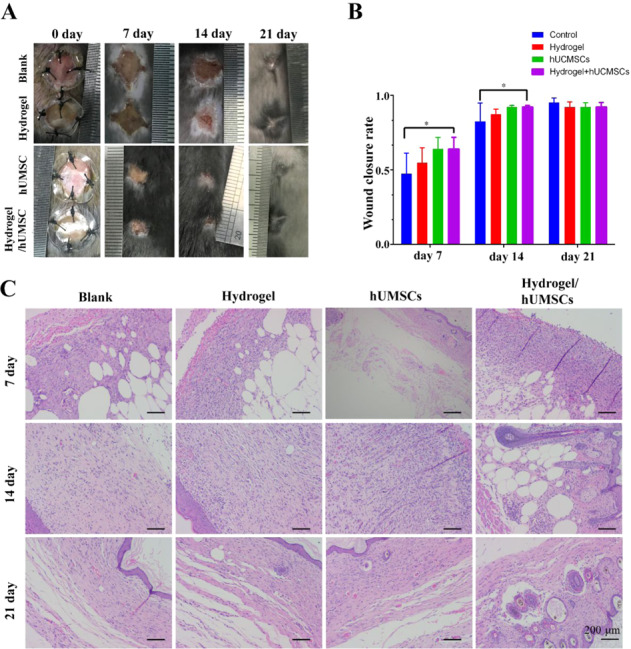
Diabetic wound is a severe complication of diabetes. Stem cell is considered as a promising therapy for diabetic skin wounds. Hydrogel can supply niche for cells adhesion and survival to improve the efficacy of stem cell therapy. This study constructed a hydrogel with low toxicity and adjustable mechanical properties from gelatin methacrylate (GelMA) and chitosan-catechol (Chi-C), and encapsulated human umbilical cord-mesenchymal stem cells (hUMSCs) to repair full-thickness diabetic wound. Hydrogel of 10% GelMA with an optimal stiffness improved hUMSCs adhesion, proliferation, and differentiation potency maintenance in vitro. Assistant with optimized hydrogel encapsulating hUMSCs, diabetic wound healing process was greatly accelerated, including accelerated wound closure, inhibited secretion of inflammatory factors TNF-α and IL-1β, promoted vascular regeneration and collagen deposition after treatment of hUMSCs. The study supplies an alternative treatment for diabetic complication. Hydrogel-hUMSCs combined treatment accelerates wound closure in diabetic mice. A. Representative images of wounds during 21-day in vivo experiments. B. Quantification of wound closure rate (%) over 21-day period. C. HE staining of wounds at days 7, 14 and 21. The bar corresponds to 200 μm.
